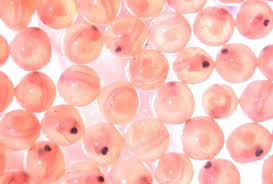The New, Invasive Ways Women Are Encouraged to Freeze Their Eggs
By Amanda Mull,
The Atlantic
| 03. 04. 2019
Fertility-clinic start-ups are trying out cute Instagram ads and other social-media-friendly tactics to reach young, anxious patients.
One of the Instagram ads for Extend Fertility, a New York–based egg-freezing service for women, presents two images. First, there’s a hand with freshly manicured nails, followed by a sassy pink cartoon of a human egg with big eyes and long lashes. “If you can afford this,” text reads above the nails, “you can afford this,” referring to the cartoon egg.
The ad, part of a campaign created by the woman who gave us the Aflac duck and the iconic “yes! yes! YES!” Herbal Essences commercials of the late 1990s, is intended to raise awareness among Millennial women about egg freezing’s capacity to extend their potential fertility well into their 40s. It’s just one of a number of marketing experiments that Extended Fertility and several other egg-freezing upstarts are running to get the word out about their services. Kindbody, which debuted its first New York City clinic in 2018, takes an Instagram-friendly van across the country to dole out free hormone tests. Trellis Health recently popped up at a location of the indoor-cycling studio Flywheel to offer a...
Related Articles
By Grace Won, KQED [with CGS' Katie Hasson] | 12.02.2025
In the U.S., it’s illegal to edit genes in human embryos with the intention of creating a genetically engineered baby. But according to the Wall Street Journal, Bay Area startups are focused on just that. It wouldn’t be the first...
Several recent Biopolitical Times posts (1, 2, 3, 4) have called attention to the alarmingly rapid commercialization of “designer baby” technologies: polygenic embryo screening (especially its use to purportedly screen for traits like intelligence), in vitro gametogenesis (lab-made eggs and sperm), and heritable genome editing (also termed embryo editing or reproductive gene editing). Those three, together with artificial wombs, have been dubbed the “Gattaca stack” by Brian Armstrong, CEO of the cryptocurrency company...
By Lucy Tu, The Guardian | 11.05.2025
Beth Schafer lay in a hospital bed, bracing for the birth of her son. The first contractions rippled through her body before she felt remotely ready. She knew, with a mother’s pit-of-the-stomach intuition, that her baby was not ready either...
By Emily Glazer, Katherine Long, Amy Dockser Marcus, The Wall Street Journal | 11.08.2025
For months, a small company in San Francisco has been pursuing a secretive project: the birth of a genetically engineered baby.
Backed by OpenAI chief executive Sam Altman and his husband, along with Coinbase co-founder and CEO Brian Armstrong, the startup—called...




